Movie Review – High Plains Drifter
High Plains Drifter manages to be overtly violent, decidedly generic and brilliantly executed by director Eastwood, who not only fronts the camera but gets to play the man in charge behind as well, something the Hollywood star has made a good living from in the intervening years. Something Eastwood has honed in his time as a director is his ability to excavate characters, and performances, from those I’d be hard pressed to say were actually “good” actors. Drifter sees less emphasis on character and more on the violence, the repercussions of which are explored in quite vivid detail. As the DVD cover blurb states implicitly, within the first twenty minutes there’s been three murders and a rape, all committed by Eastwood himself. That’s not to say there’s some validity to this, which there is in due time, but the concept of violence in the Old West is something I feel Eastwood has tried to explore a lot in his films of the genre. It’s well known that Unforgiven, his first Oscar win, explores violence quite graphically in this genre of film, and the tip of this iceberg can be seen in his earlier work, Drifter included.
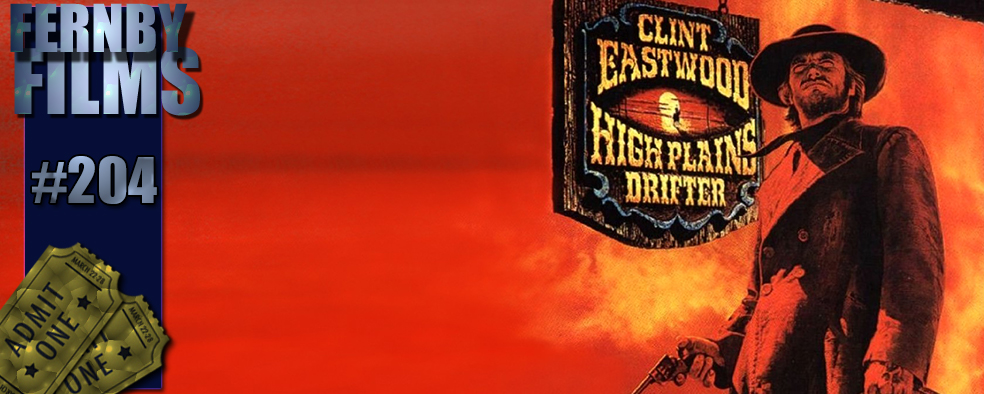
– Summary –
Director : Clint Eastwood
Cast :Clint Eastwood, Verna Bloom, Billy Curtis, Mitch Ryan, Mariana Hill, Jack Ging, Stefan Geirasch, Ted Hartley, Geoffrey Lewis, Dan Vadis, Anthony James, Walter Barnes, Paul Brinegar, Richard Bull, Robert Donner.
Year Of Release: 1973
Length : 100 Minutes
Synopsis: A town hires a mysterious gunman to kill three murderous criminals. With the Stranger given carte blanche to the town in order to kill the men, tensions and emotions run high until the epic, bloody showdown ensues, which sees not only the criminals in the line of fire, but some of the townsfolk as well.
Review : Raw, violent and uncompromising, this seemingly generic Western genre film is a lot more than it appears to the casual viewer. Riveting viewing from early Eastwood.
*********************
Thoroughly captivating, if slightly overblown, Man With No Name Western genre entry from Clint Eastwood, returning to the hard-nosed cowboy image he patented in Sergio Leoni’s Dollars Trilogy. Eastwood plays a mysterious stranger who ventures into the beach-side town of Lago, only to find that the inhabitants are hiding a deadly secret, and want him to “take care” of a trio of villainous thugs, who are about to be released from prison. Set against the backdrop of escalating tension and anger within the town, Eastwood’s Stranger is given carte blanche to whatever he wants: guns, cigarettes, booze…. whatever will help him kill the oncoming trio of criminals. The townspeople, though, have demons of their own, involving the night-time slaying of the sheriff, a storyline barely expanded upon save for a few moments of brief dialogue.
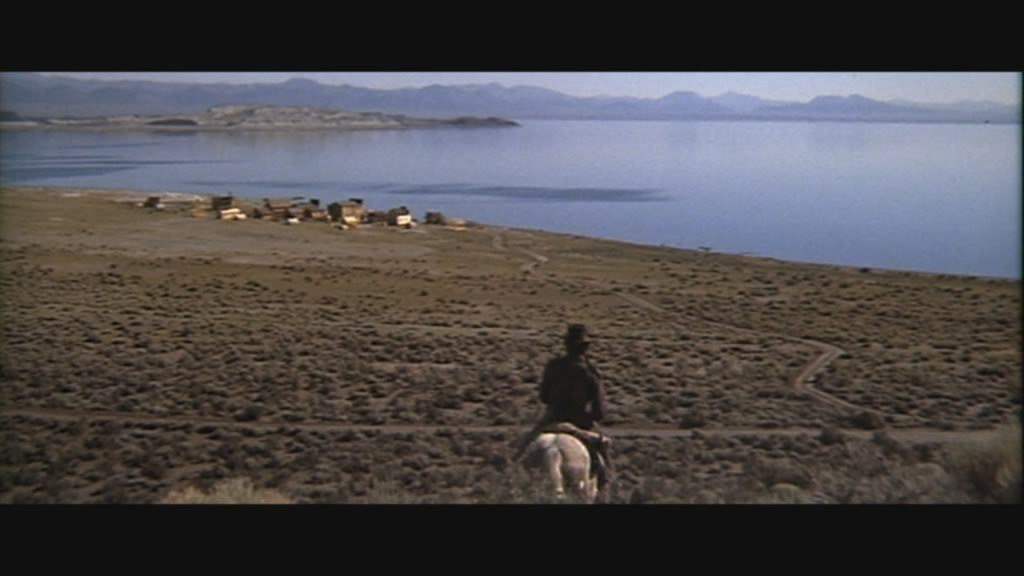
High Plains Drifter manages to be overtly violent, decidedly generic and brilliantly executed by director Eastwood, who not only fronts the camera but gets to play the man in charge behind as well, something the Hollywood star has made a good living from in the intervening years. Something Eastwood has honed in his time as a director is his ability to excavate characters, and performances, from those I’d be hard pressed to say were actually “good” actors. Drifter sees less emphasis on character and more on the violence, the repercussions of which are explored in quite vivid detail. As the DVD cover blurb states implicitly, within the first twenty minutes there’s been three murders and a rape, all committed by Eastwood himself. That’s not to say there’s some validity to this, which there is in due time, but the concept of violence in the Old West is something I feel Eastwood has tried to explore a lot in his films of the genre. It’s well known that Unforgiven, his first Oscar win, explores violence quite graphically in this genre of film, and the tip of this iceberg can be seen in his earlier work, Drifter included.
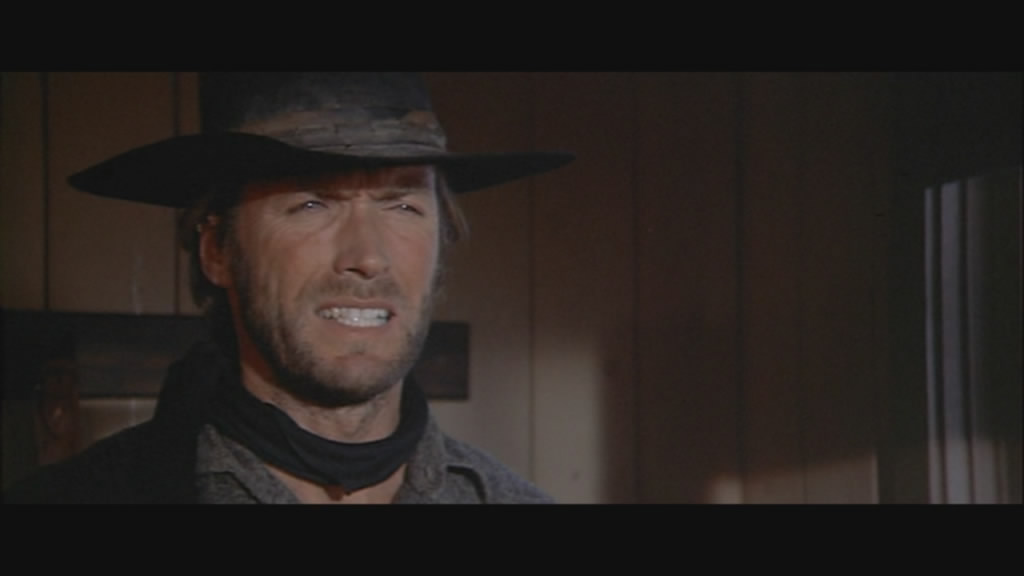
The problem with the Western, up until Sergio Leone and Eastwood burst onto the scene, is that the violence within the genre was kept to pretty safe distances from the viewer. Blood and spatter were limited at best, and hidden at worst, emasculating the gunfighter in a way that stands them in the same stature of the original Looney Tunes cartoons: violence begets violence and there are no horrific consequences…. except people die. Cowboys and Indians had, until Eastwood’s directorial style came to fruition, been fairly bloodless affairs, for the main part, although relaxed classifications and social values (it was the sixties and seventies, after all) allowed Hollywood to explore more bloody, more graphic, narratives to get their point across. While it’s fair to say that Eastwood’s westerns have been predominantly bloody, violent and often overtly masculine, one must remember the context in which they are presented.
High Plains Drifter is an eponymous Western: the hired gunslinger defending a town of rag-tag residents, against a group, army or collection of people who would do them harm. Incredible odds, maximum violence, and plenty of gunplay, all make sure that the Western is as clichéd as possible with sneering thugs, happy-yet-downtrodden whores, filthy Mexicans, and plenty of red blood spraying across the screen. Here, though, Eastwood brings his silent, moody sensitivity to a screenplay and storyline that’s replete with mythos and mystery to make you, as a viewer, ask yourself: is it right to counter violence with more violence?
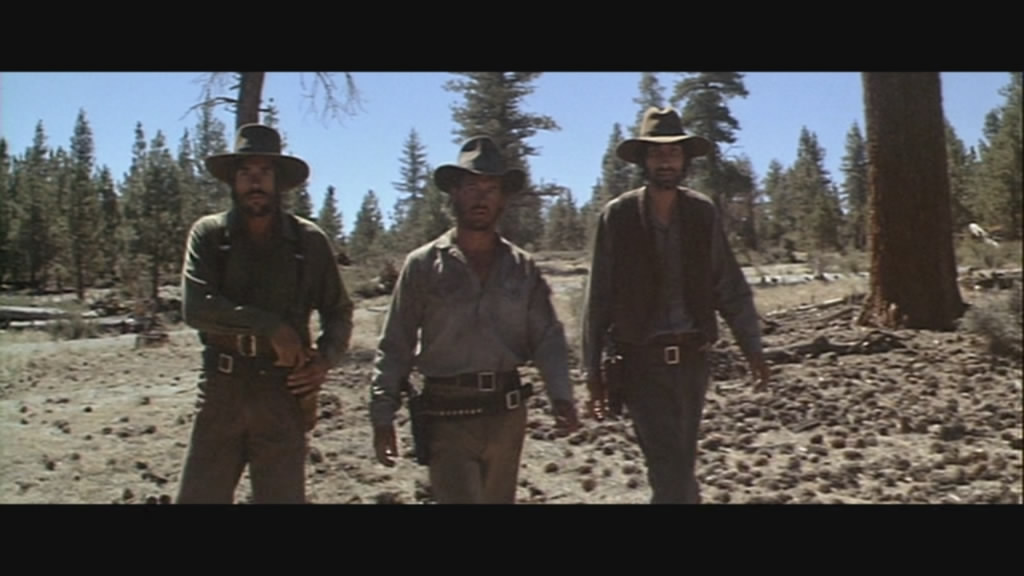
Eastwood strides into town, his manly posture and demeanour (honed by years of saddle-sitting in other Western projects) ensuring we, and the rest of the cast, know he means business. Lago is by no means a prosperous town. The local mine, which seems to be the main source of income for the waterfront settlement, seems to be upon hard times, and Eastwood makes no friends upon his entry into the area. Trying to have a shave, he is forced to shoot down three thugs who provoke him into action, and at the exit of this scene, he merely strides past them as if they were nothing, their bodies flung asunder upon the ground. Townsfolk gasp, people sense something is afoot, and questions must be asked. And asked they are, by one of the towns more salubrious inhabitants, a young woman named Callie (Marianna Hill) accosts him and berates him, until Eastwood drags her to a nearby stable and rapes her. This display of masculinity, in itself both a powerful and horrible thing, is what essentially drives Eastwood’s character through the film. He can have, regardless of who says so, whatever (or whoever) he wants.
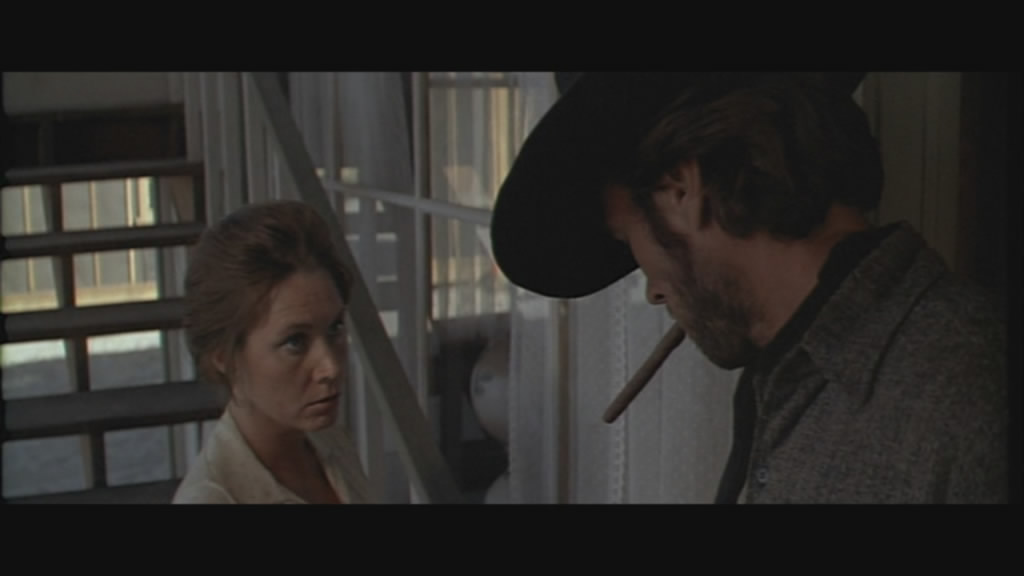
When he is approached by the town elders to help them kill or drive off the three soon-to-be-released felons (who are on their way back to town from Yuma prison), The Stranger demands, and receives, carte blanche from the town to ensure success. The problem is, his demands of the townsfolk soon begin to baffle them, to drive a wedge into the community, with the more powerful members of the town’s elite being stripped of their rank, and the lowly (eschewed by the local dwarf, Mordecai, played by Billy Curtis) raised up to be more senior. The dynamic the Stranger imbues within the town is cataclysmic, especially in light of the presentation of an event that will become pivotal to the town’s survival. It would appear, in a dream sequence from the Stranger, that the townsfolk have recently allowed their sheriff to be murdered, due to a shonky issue with government land. This guilt, like a stain of sin on the town, derives from the viewer a sense of righteous anger; especially towards those who stood by and did nothing while the man was flogged to death on the street. This guilt, also, is manifesting itself through the tension brought about by the Strangers presence and actions.
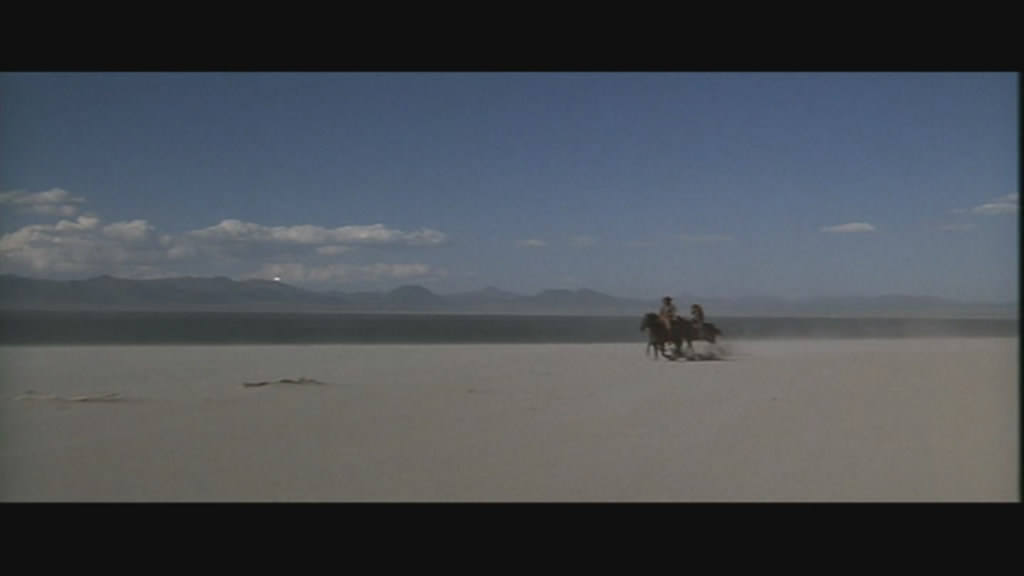
The Stranger tasks the townsfolk with the job of painting the entire town, church and all, red. Blood red, like the stain of blood that hangs across the town like a suffocating blanket. Almost everyone, including the supposedly virtuous and blemish-free Callie, is in some way guilty of a man’s murder. The three felons, we find out, were hired by the townsfolk to murder their sheriff, who discovered that the local mine was illegally on Government land, and now it seems they want to cover their tracks by having the men killed.
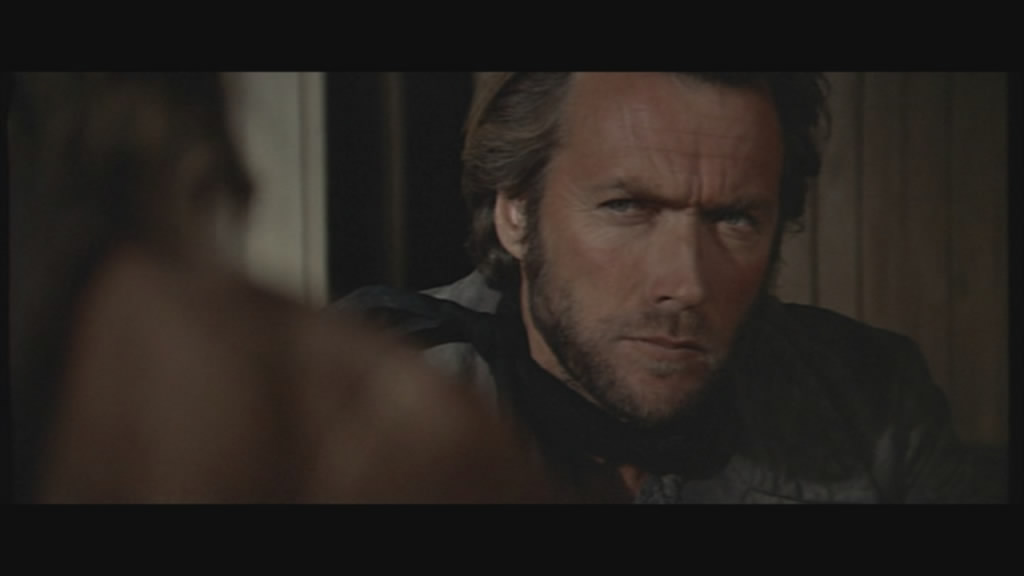
Eastwood, silent and calm in the face of impending violence, casts an enormous shadow across the film, the slow build-up of dread and tension almost Hitchcock-esque in it’s intensity and careful, managed moments. The sight of Lago, a malevolent red hue, sitting peacefully upon the banks of an enormous lake, prior to the eruption of violence to come, is symbolic of many things, the most formidable of which would be the cancerous blight of sin within our world. The issue of hatred, violence and guilt all play out to their dramatic, and I would almost say foregone, conclusions with a strange, ironic speed, as Eastwood comes up against the three murderers in the blazing night of a Lago evening. Fire sweeps the town, the red paint burning away and the guilty sin slowly, slowly, being excised like a tumour from the towns psyche. Eastwood is stoic, almost wooden (although he’s not) in this film, teeth-gritting and squinting his way through a fairly pointed script with little embellishment. This is a tale of retribution, a story of corruption and moral decay come full circle.
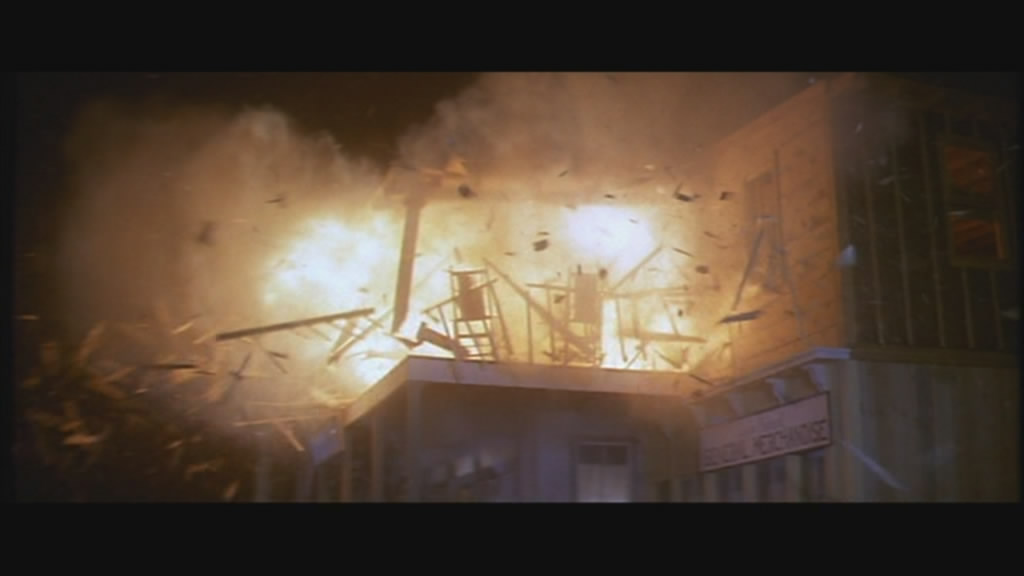
Where does High Plains Drifter go wrong? Almost nowhere, to be honest. If anything, it’s a tense, cocky effort from Eastwood, who uses the widescreen frame so astutely, so exceptionally well, you’d think he’d been directing feature films for decades. His framing of scenes, his editing of key moments of the film, are well judged and often beautiful to behold. The print used for the DVD currently on offer here in Australia is quite scratched and grimy, especially at the beginning of the film, so the raw beauty of the Stranger’s entry into Lago is nullified somewhat by film artefacting, however, the impact of his arrival is felt long after he rides that horse on in. The characters, including a young Mitchell Ryan (who most audiences will recall was “roasted” as Mr Allen by Jim Carrey in Liar Liar…) are pretty one dimensional from the outset, although Eastwood’s canny enough to realise that the generic characters themselves can be used in a way that allows us to build up a profile of the town as a whole, by merely showing it’s inhabitants. The landscape, a desolate, purgatory-looking place (filmed at Mono Lake in California) is especially thematic, the use of the barren landscape perfectly emulating the barren moral and ethical codes of both the Stranger and Lago’s own inhabitants. The desolation is somewhat depressing, almost exhausting in some ways, but carries the symbolic significance Eastwood desired to ram home the point of the story.
Musically, Drifter offers the film viewer something interesting. The score, composed by Dee Barton, is predominantly twangs and clangs, a lot of percussive and eerie sounds that are perhaps more reminiscent of a horror film. Indeed, much of the mood of the film can be laid at the feet of Barton’s tremendously haunting, and often scary, score. Eastwood would not work with him again, which, on a personal note, is something of a shame. His work in Drifter, and Eastwood’s directorial debut, Play Misty For Me, are both superb.
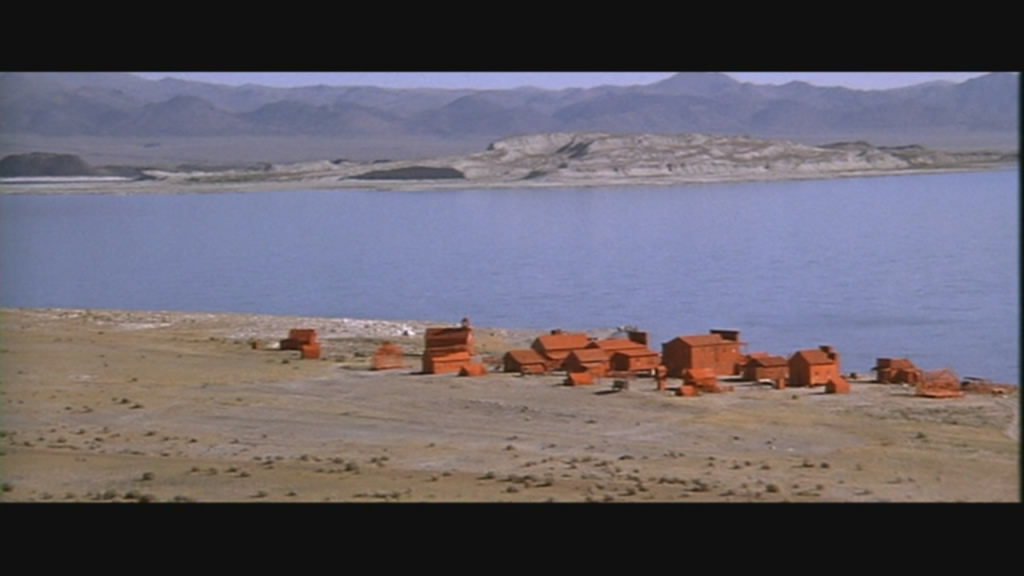
For it’s somewhat shaky outer casing, and often tenuous grip on realism, High Plains Drifter is a bona fide classic Eastwood Western, and one of my favourites from his oeuvre. Alongside Pale Rider, I think Drifter is perhaps one of Eastwood’s most enduring, and shattering, film legacies. It’s enduring themes of revenge, of violent retribution and escalating moral turpitude, are encompassing, if not appreciated by the modern viewer: Eastwood asks us to wallow in the violent acts, not to enjoy them, but rather, to ask us if we’d behave in similar ways, and to what level a society will degrade itself to cover up it’s sinful past. This film represents Eastwood in top form, early on in his career. While outwardly perhaps a merely formulaic action/Western genre film, High Plains Drifter seems to muddy the water enough for us viewing it that it’s possible a lot more is said beneath the bright, violent images. It’s up to us to look and try and interpret it.




 Clint Eastwood – High Plains Drifter (1973)
Clint Eastwood – High Plains Drifter (1973) Film Review: Clint Eastwood’s High Plains Drifter
Film Review: Clint Eastwood’s High Plains Drifter




